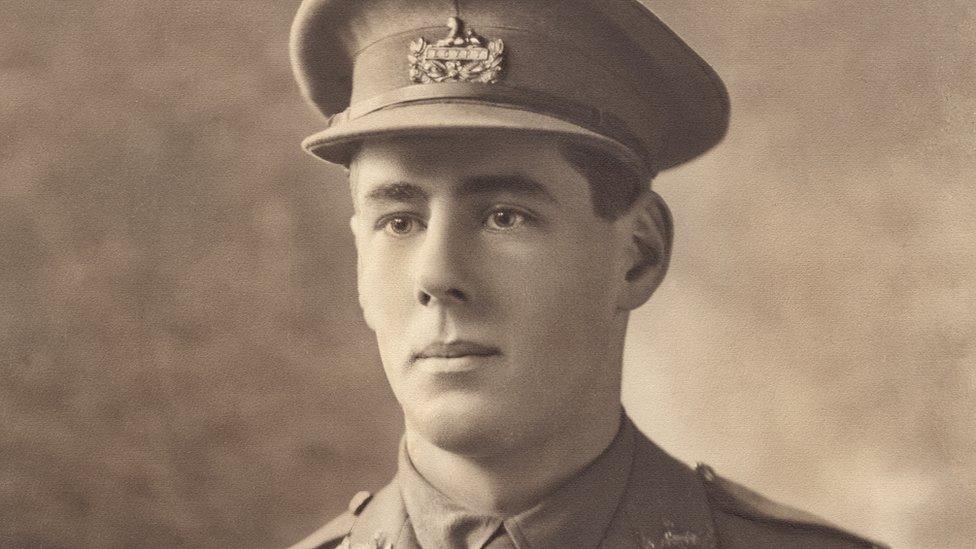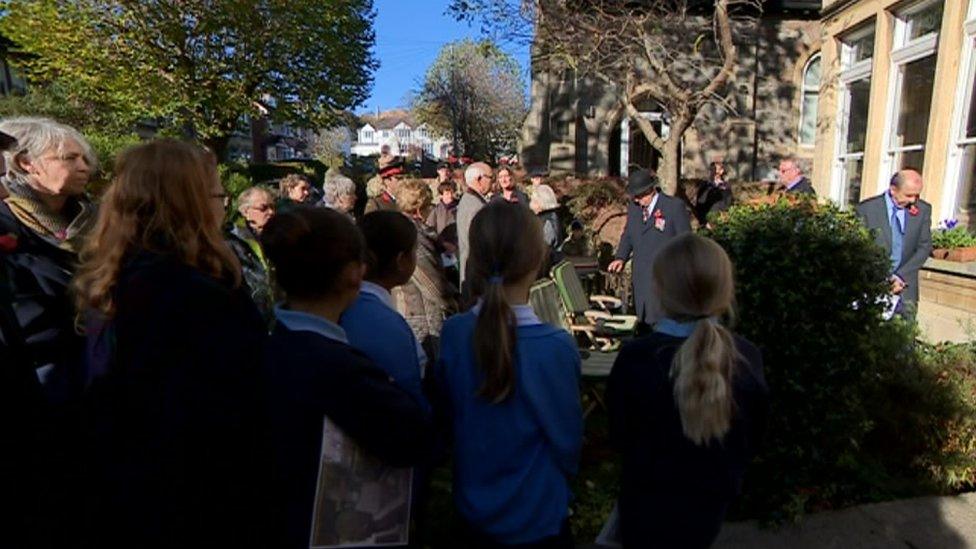Blue plaque for Bristol University WW1 flamethrower hero
- Published

Hardy Parsons suffered horrific burns as he fought back German troops
A blue plaque has been unveiled at the home of a soldier who fought off a German flamethrower attack almost single-handedly during World War One.
Hardy Falconer Parsons was posthumously awarded the Victoria Cross (VC) for gallantry for his actions in August 1917.
The Bristol University medical student was armed only with hand grenades as he tried to stop an enemy counter-attack.
The plaque was unveiled 100 years after King George V presented Hardy's VC.
Parsons, a 2nd Lt, was born in Rishton, near Blackburn, and had joined the Gloucestershire Regiment in 1917.

The blue plaque has been unveiled at the former home of Hardy Parsons in Redland
On 21 August 1917, his battalion was holding recently captured trenches at a position known as The Knoll near the village of Vendhuile in France.
During the night, German troops using flamethrowers attempted to recapture the strategically important site.
Armed just with hand grenades, Parsons fought back almost alone at his post, despite suffering terrible burns, which gave his comrades the chance to launch a successful counter-attack. He died the following day aged just 20.
King George V presented the VC for "conspicuous bravery" to the soldier's father, saying his son had acted despite "being severely scorched and burned by liquid fire".

Children from the soldier's former school in Bath attended the ceremony
Speaking at the unveiling ceremony outside the former family home in the Redland district of Bristol, local historian Jeremy Banning said: "We cannot begin to imagine the sense of duty that compelled him to stay at his post, or the pain he would have endured during and after sustaining such horrific burns."
Children from the soldier's former school in Bath attended the ceremony, alongside the lord mayor of Bristol.
Parsons was the first member of the Gloucestershire Regiment to receive a VC during World War One, and a tablet in his memory is in the chapel of Kingswood School.
His Victoria Cross and campaign medals are held by the Soldiers of Gloucestershire Museum.